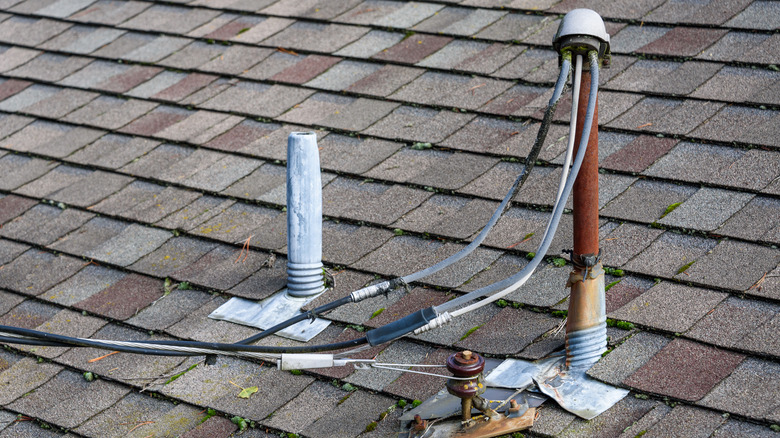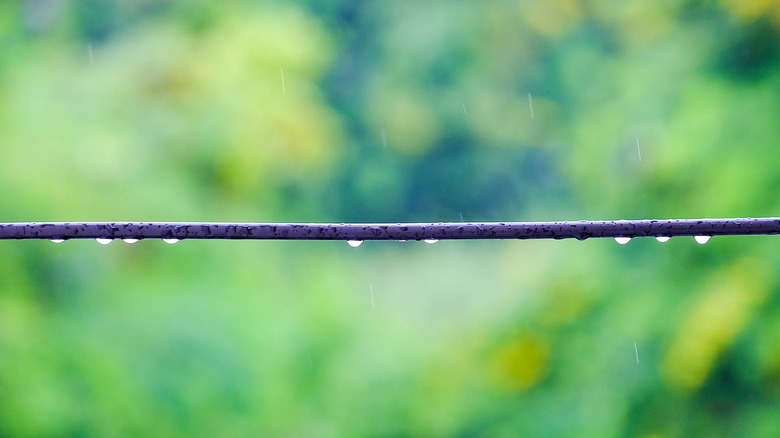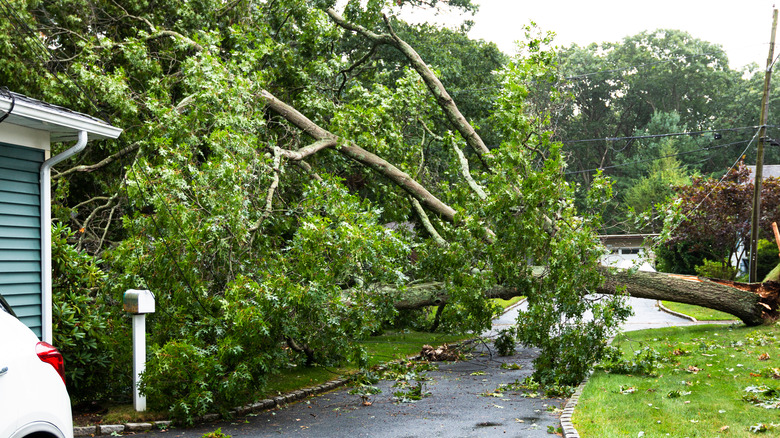What Is A Weatherhead?
If you live in an area with overhead power cables, the weatherhead is part of the key electrical infrastructure of your home. According to National Grid U.S., a weatherhead is a watertight fixture that stops rainwater from running down the wires and into your circuit breaker. However, as a layer of protection between your home's electrical panel and the weather, the weatherhead itself is vulnerable to damage from intense storms. Because it is part of your house, not the city or municipal power line, it is your responsibility to make sure it's working.
Other names for a weatherhead, per Frye Electric Inc., include weather cap, service entrance cap, or service head. Within the overall configuration of pipes, wires, brackets, and gaskets that fit together to connect your home to the electrical grid, the weatherhead is located at the point where the outside meets the inside. As such, it is critical that this piece of equipment is installed correctly. Faulty placement or unattended storm damage, can get very dangerous, very quickly.
Keep reading for an explanation of how weatherheads work to keep your system safe, and a quick discussion about issues with weatherheads that you ought to be aware of.
How does a weatherhead work?
As explained by Design World, a weatherhead is essentially a cap made of waterproof material, which, in order to be considered safe and effective, must be angled down at least 45 degrees. On the underside, there are several holes and gaskets through which overhead electrical wires connect to your home circuit breaker box below.
Immediately beneath the weatherhead, on the outside of the house and system, you may see drip loops. These are a key mechanical failsafe for your weatherhead. Drip loops, according to KB Electric, are looped wires with a U-shaped bend, hanging down between your main utility wire and the weatherhead, where the electricity enters your building.
The combination of downward-facing cap and drip loops is designed to use gravity to force rainwater away from the weatherhead. Because of the angle of the cap, most water that comes near the wires will be deflected down and away, and because the drip loops hang below the weatherhead, any water that might be trickling along the wires will fall and drip from the lower tip of their U-bend.
On top of the gravity-aided design, the weatherhead is then made as safe as possible using watertight rubberized gaskets that further seal against any moisture. The wire from your weatherhead runs straight into your main circuit breaker, so it must remain 100% dry to avoid costly repairs and potentially fatal injuries.
Some common issues with weatherheads
The sign of a good weatherhead is that you never think about it. Many homeowners only learn they even have one when they find out they need to replace it. This is a common occurrence after severe storms, according to the Orlando Utilities Commission, as vulnerable trees often take down overhead electrical cables with them as they fall. The technicians from the utility company can fix their own equipment, but they won't work on your weatherhead, as that's technically part of your home. Plus, they're not allowed to reconnect houses with faulty fixtures. All of this means a problematic weatherhead can be the difference between you having electricity and not.
This bring us to the next issue with weather caps — they require professional assistance to repair. According to Rockwall Electric, you should never attempt to fix a broken weatherhead on your own. There are huge amounts of electricity passing through them, so it's very important that any repairs are completed safely, accurately, and thoroughly. Working on a weatherhead without being professionally trained in how to do so is extremely dangerous; do not assume you can figure it out as you go.
If you've just learned that you have a weatherhead because, unfortunately, it's been knocked out of position, you need to find a certified electrician ASAP. Don't run the risk of damage to yourself or your home by doing anything else.


